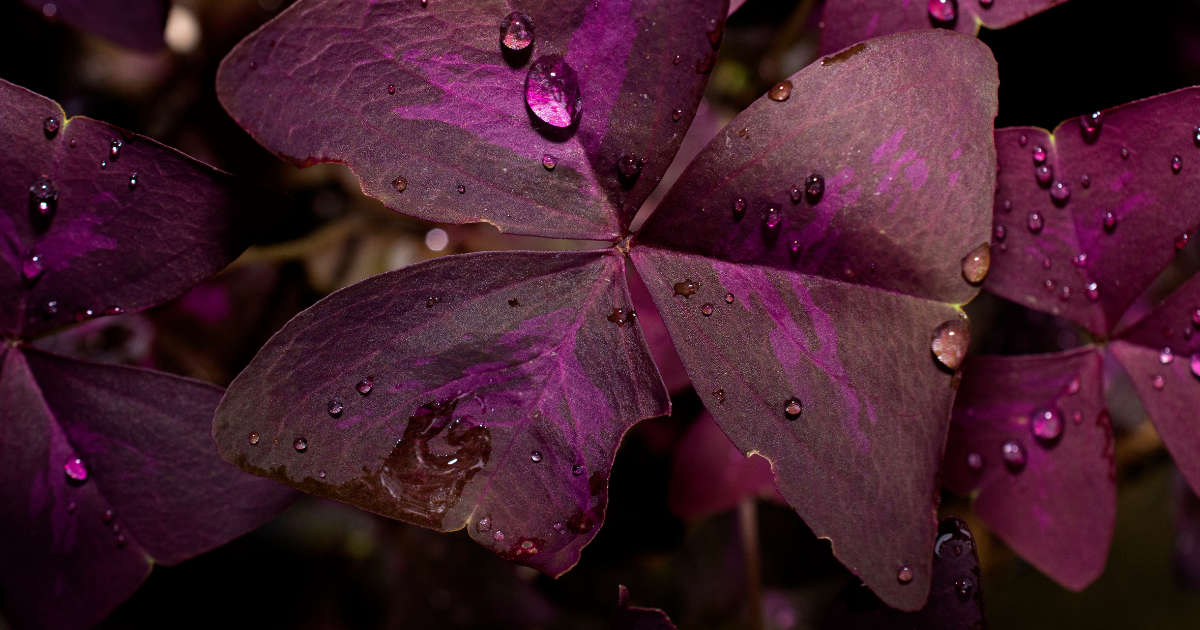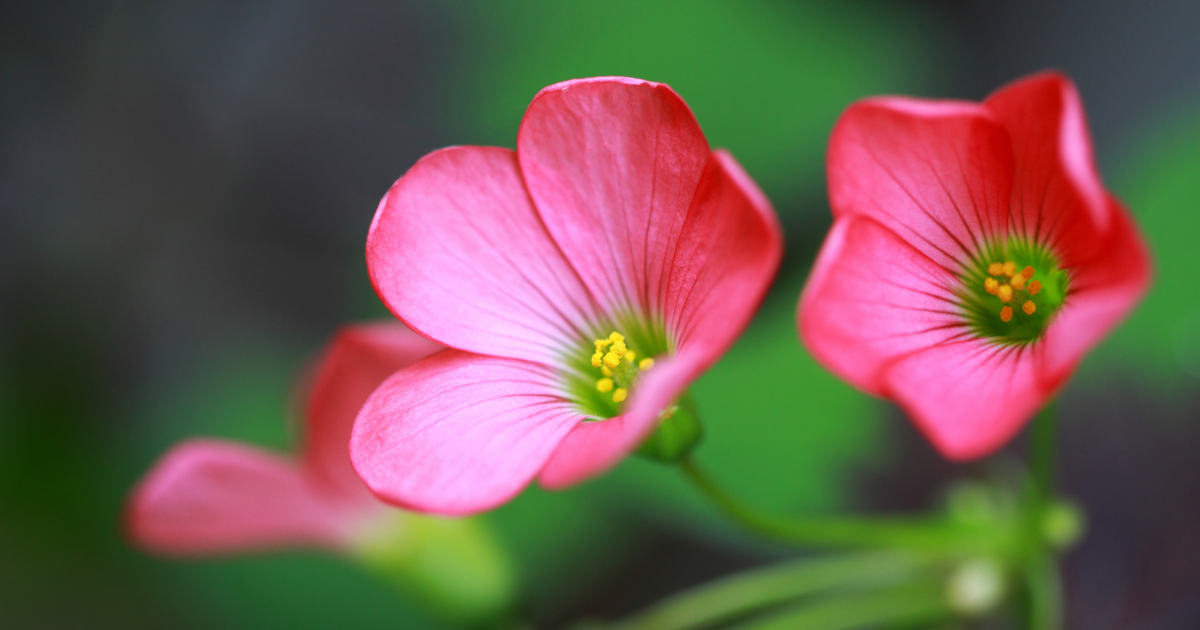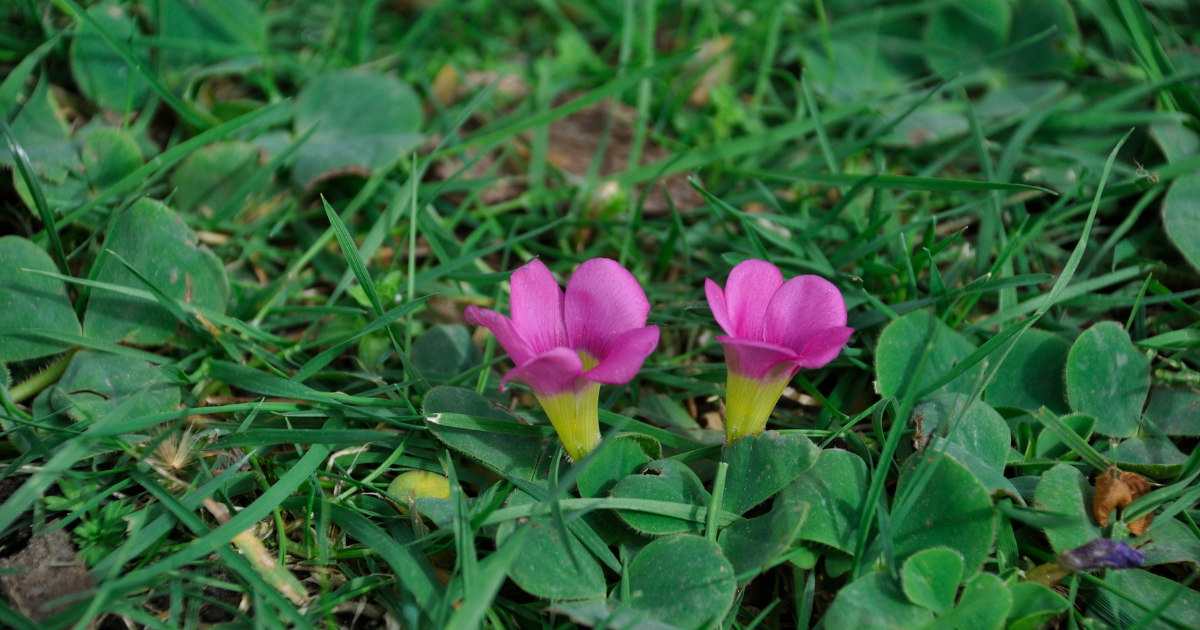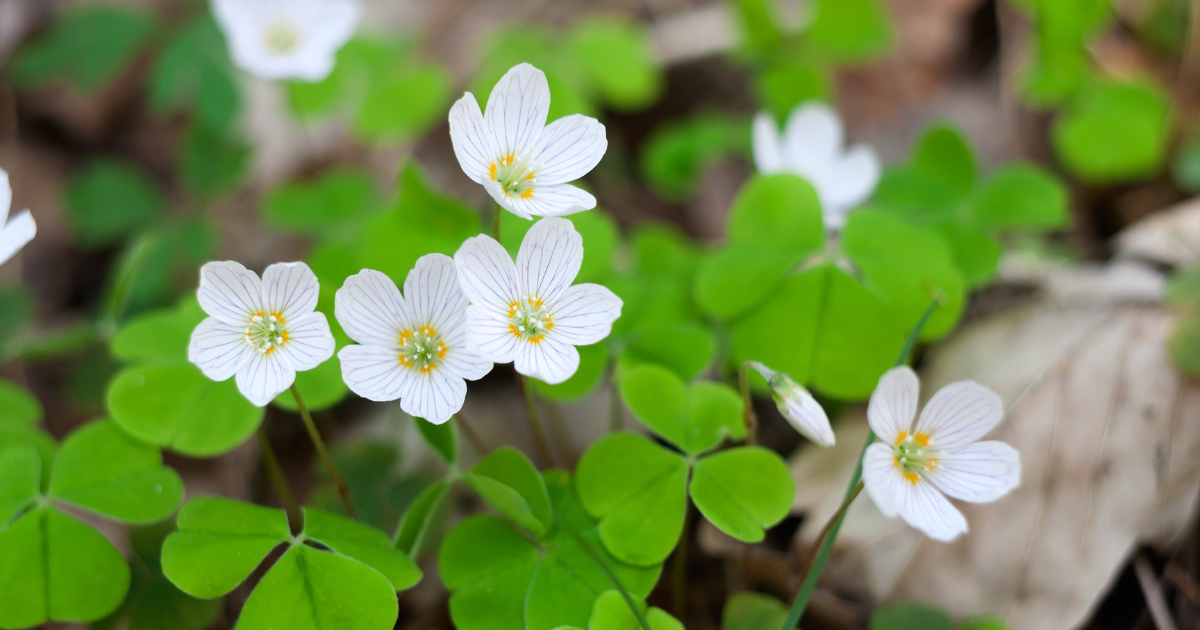12 Types of Oxalis: From Triangularis to Corniculata
Oxalis, commonly known as wood sorrel or shamrock, encompasses a diverse genus of plants, each with unique characteristics and adaptabilities. Here, we explore 12 types of Oxalis, highlighting their distinct features and growth requirements.
1. Oxalis Triangularis (Purple Shamrock)

Oxalis triangularis, with its distinctive purple, triangular leaves, is a visually striking plant. Ideal for zones 7 to 10, it prefers environments that offer bright, indirect sunlight, mimicking its natural understory habitat. Its well-drained soil requirement underscores its dislike for waterlogged conditions, which can lead to root rot.
This variety's decorative appeal makes it a popular choice for both indoor and outdoor gardening enthusiasts, with its vivid coloration and dynamic response to light, folding its leaves in the dark and spreading them in the light.
2. Oxalis Corniculata (Creeping Wood Sorrel)

This adaptable annual herb is known for its small, hairy leaves and yellowish-green flowers, thriving in a variety of dry locations. Despite its adaptability, its invasive nature in certain areas necessitates careful management.
Its resilience and widespread distribution make it a common sight, from deserts to urban settings, indicating its robust nature and ability to thrive in less-than-ideal soil conditions.
3. Oxalis Stricta (Common Wood Sorrel)

Often considered a weed in North America, Oxalis stricta is notable for its cheerful yellow flowers and ability to adapt to various light conditions. This versatility makes it an excellent option for ground cover, providing a low-maintenance, attractive option for gardeners looking to fill their space with native flora that supports local ecosystems.
4. Oxalis Deppei (Four-leaf Sorrel)

Celebrated for its resemblance to the four-leaf clover, Oxalis Deppei can reach heights of up to a foot. This perennial is suitable for zones 7 to 10 and can also be grown as an annual in cooler climates. Its container growth popularity around St. Patrick’s Day highlights its cultural significance and ornamental value.
5. Oxalis Grandis (Great Wood Sorrel)
As one of the tallest species in the genus, reaching up to two feet with bright yellow flowers, Oxalis grandis brings dramatic height and vibrant color to gardens. Native to the eastern United States, it prefers full to partial sun and can make a grand statement in a range of garden zones (6 to 11).
6. Oxalis Montana (Mountain Wood Sorrel)
Admired for its white and lavender striped blossoms, this species is ideal for shaded areas under conifers, thriving in zones 6 to 10 without becoming invasive.
7. Oxalis Purpurea (Purple Wood Sorrel)

With large, dark pink flowers, this South African native is a stunning ground cover that grows well in partial sun or shade. It's hardy in zones 9 and 10 but can self-seed in zones as cold as 6.
8. Oxalis Acutifolia
Preferring wet habitats, this perennial herb with long, narrow leaves and white flowers showcases the genus's ability to adapt to aquatic environments. It's often found in marshes and swamps, contributing to the biodiversity of wetland ecosystems.
9. Oxalis Oreophila
With heart-shaped leaves and pinkish-purple flowers, Oxalis oreophila thrives in moist habitats, adding color and vibrancy to water-adjacent landscapes. Its large leaves and striking flowers make it a notable species among water-loving plants.
10. Oxalis Acetosella

This perennial herb is known for its thick, leathery leaves and white flowers, thriving in damp environments. Its growth in riverbanks and wetlands makes it an important species for maintaining the health and stability of aquatic ecosystems.
11. Oxalis Albicans
Adaptable to wet environments, this perennial herb has oval, pointed leaves with a range of flower colors. It's another example of the genus's diversity, thriving in swamps and marshes with its colorful blooms.
12. Oxalis Ciliaris
This perennial herb prefers swampy areas near water, featuring round, hairy leaves and white or pale blue flowers. Its preference for moist environments further exemplifies the Oxalis genus's adaptability to a range of habitats.
Fern's Leafy Learnings
Diverse Habitats: Oxalis species adapt to a wide range of environments, from dry roadsides to moist wetlands.
Varied Growth: They range from ground-hugging annuals like Oxalis corniculata to tall perennials like Oxalis grandis.
Invasive Potential: Some, like Oxalis stricta, are considered invasive, while others, such as Oxalis montana, are more contained.
Decorative Appeal: Varieties like Oxalis triangularis are cultivated for their unique foliage and flowers.
Care Requirements: While diverse, most Oxalis prefer well-drained soil and varying degrees of sun exposure, from full sun to partial shade.
Deepen Your Roots with Flora
At Flora, we not only bring you a vibrant selection of locally sourced, rare, and delightful plants, but we also serve as your continuous guide in your plant parenting voyage, ensuring every leaf in your sanctuary thrives. With our Flora Pod™ technology and a nurturing community of over 250,000 plant lovers, we cultivate a space where every plant parent - novice or expert - can blossom.
We propagate with a commitment to sustainability, connection, and ceaseless growth, fostering a community where each member, and their plants, are cherished and nurtured.
Crave a lush, thriving green space? Adopt a plant from Flora today!
Flora Pod™ is featured on Shark Tank!
Top 10 Most Popular Roses
Mar 22, 2022
How to Care for China Roses
Mar 11, 2022
How to Care for Chinese Money Plants
May 15, 2020
How to Grow and Care for A Bird of Paradise
Apr 26, 2020
Top 10 Plants To Grow In A Terrarium
May 31, 2022
How to Grow and Care for Lucky Bamboo
Mar 29, 2022
How to Grow and Care for Corn Plants
Mar 29, 2022
How to Care for Madagascar Dragon Trees
Mar 21, 2022



